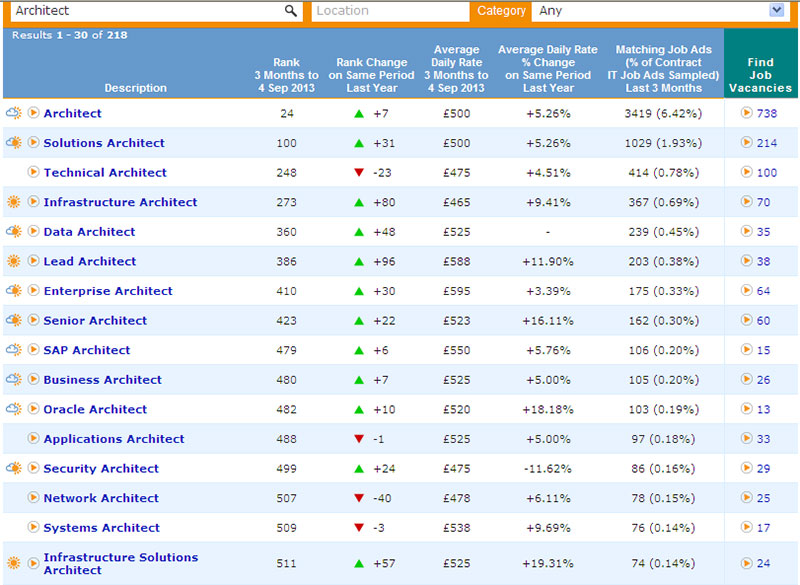I was contacted recently regarding two separate contracts both requiring an HP Exstream Architect, and both roles fell through after discussing rates. I was asking for a rate somewhere between £500 – £600 per day depending on the specifics of the role and was told by the manager of “Talent Aqcuisition” at Espire that I was very expensive!
This isn’t the first time this has been said of course and my usual response is that I’m not that expensive when you consider the level of experience I have with HP Exstream. I’ve worked on everything from Bank Statements, to Credit Agreements, Full Colour Investment reports to simple Apology Letters. Mainframe, Unix, Windows I can happily work with and am aware of the limitations of all the usual platforms. I am familiar with AFP, IJPDS, PostScript, PDF, HTML, and XML output among others and have worked with several of the major workflow tools including Infoprint Workflow, Emtex, and the forerunner of HP Command Centre. There’s more I could mention but this isn’t supposed to be an advert for me, I just wanted to set my rate in context. I’ve worked with HP Exstream for over 13 years now, starting with version 1.2 back when it was first launched and CSF from Metavante before that. If you look at comparable architect rates for other technologies you’ll see they’re around the same ballpark.

Now I know rates are falling for HP Exstream, it’s inevitable as more and more people gain experience with the tool, the supply increases so unless there’s a corresponding spike in demand it’s natural that rates reduce. The impact of offshoring can’t be ignored either, if there is cheaper resource available overseas then of course that is going to impact the available rates as well. The big question though is if that’s what is driving rates down then why isn’t it happening across IT in general? Given that training in other IT skills such as Programming, Database Development, Project Management etc., is much more widely available surely those are the skills that are going to devalue the fastest?
A quick check on itjobswatch shows this isn’t happening, the rates are still rising.
 |
 |
 |
Why is it different for print professionals?
Well one aspect that can’t be ignored is that initially, certainly for Exstream anyway, experienced contract resources were very thin on the ground and as a result could demand much higher than average rates so there is an element of natural correction going on, but the other side of this is that working with High Volume Document Production is highly specialised, whilst it is relatively straightforward to take skills gained in Document Development and apply them to other types of development work the same can’t be said for the reverse. In other words it’s relatively easy to leave print development for another branch of IT but it isn’t so easy to come into print from other areas.
Given that many document professionals are also skilled in multiple development environments this is a particular risk to the industry, why would you want to stay specialised in something so niche when you get better rates with more general roles? For comparison, itjobswatch reported over 5000 Java roles advertised in the UK over the last three months compared to just 3 Exstream roles in the same period.
I think a big part of the problem is those two magic words you always hear from agents when it comes to discussing your price; “Market Rates”. What are the market rates? Does anyone really know? If you were about to take your first step into Contracting how would you know what the market rates really are? Personally I’ve seen my rate vary wildly over the years and have been offered everything from under £300 per day to over £900 per day, admittedly for very different roles but it gives you some idea of the range. The clients vary as well, some are notoriously low payers, some have it about right and some are, to be frank, paying over the odds although this is much rarer now.
So What?
I can hear many of you asking, “so what? We live in a capitalist society and rates are governed by market forces so it will all work out in the end won’t it?”. Maybe it will, but that is a very big maybe. As I said above, why would you want to stay in a niche which accounts for just 0.006% of the market (compared to say Java or .net which are around the 10% mark)) and accept the associated risk that there could be times without work for a lower rate when by switching to a more mainstream role you can earn higher rates and have a much lower risk of being on the bench. It doesn’t make sense, and as more and more individuals realise that, it’s going to happen more frequently and the industry as a whole is going to lose a lot of expertise.
Staff retention can be a problem, one of my clients was paying their permanent Exstream developers in the region of £22k per year. Despite warning them that they were significantly below market rate they didn’t adjust the salary and subsequently lost a number of staff to better paying jobs.
The other issue is that given that talent generally follows the money and more and more document production (and therefore demand for resources) comes from third party vendors, so for the clients/business owners how do you know whether the people working on your applications are among the best at what they do or just getting by? Are your projects generally delivered successfully on time or do they consistently run into problems? Of course this can be for a multitude of reasons, but a significant factor is the skill level of the team working on your project. “If you pay peanuts you get monkeys” still rings true, and if your supplier is consistently paying below average rates it’s unlikely they’re going to be delivering top quality solutions.
What Can We Do?
Well to an extent not a lot, ultimately we are living in a market economy and have to deal with that but I think a lot could be gained by getting a true picture of what the real market rates are. At least then you would know whether a role is paying above or below the average, which you could factor into your decision making. I’d like to get a survey of current market rates off the ground but it will only work if we can get a good response, so what do you think? Would you be willing to share your current rates? No names will be published alongside any rate information although I will ask for a corporate email address to ensure we’re not just collecting made up figures.
To kick it off this is what I see as realistic market rates:-
| Role Type | Permanent Salary- GBP | Contract Daily Rate – GBP |
|---|---|---|
| Developer | £25k – £35k | £350 – £450 |
| Analyst/Developer | £30k – £50k | £450 – £550 |
| Senior Analyst/Architect | £40k+ | £500 – £650 |
For the contract rates it should be noted that I’m talking about the rate the contractor would be billing at, this doesn’t take into account the mark up added by agencies/consultancies which can also vary. So what do you think? Am I way off the mark?

[…] on from my previous post about the apparent lack of value placed in document professionals I’ve pulled together a quick survey so that we can find out what those mythical market rates […]